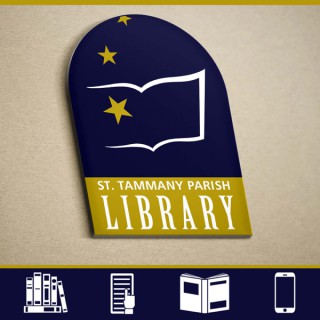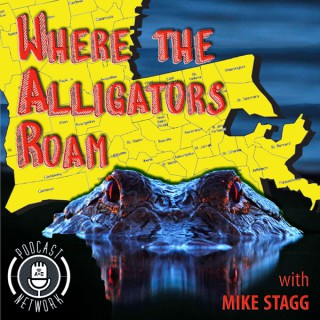Podcasts about florida parishes
- 4PODCASTS
- 5EPISODES
- 50mAVG DURATION
- ?INFREQUENT EPISODES
- Aug 31, 2021LATEST
POPULARITY
Best podcasts about florida parishes
Latest news about florida parishes
- The Advocate taps Nicholson to serve as crime reporter BizToc - Apr 11, 2023
Latest podcast episodes about florida parishes
Episode 122: The Florida Parishes and the Republic of West Florida
Why are a group of parishes in Louisiana called "The Florida Parishes?" We answer that question and discuss the short lived Republic of West Florida in this episode.
Images of America: African Americans in Tangipahoa and St. Helena Parishes
Join Author Dr. Antoinette Harrell for a discussion of her new publication - Images of America: African Americans in Tangipahoa and St. Helena Parishes. Leonard Smith III, wrote the foreword for this publication. Dr. Harrell will discuss how she encouraged and mobilized the community to donate photos for this first ever publication in Tangipahoa and St. Helena Parishes. The Images in this series celebrates and documents the priceless images of African American people in the two Louisiana Florida Parishes. Each photograph and each title presents the distinctive stories from the past. Images of African American educators, farmers, pioneers, elected officials, business owners, and others are featured in this rich collection. The rich images tell the story and history of the undocumented history of people who called the Florida Parishes home.
STPL Podcast #104 - La.'s Florida Parishes After the Civil War (Dr. Hyde)
Dr. Sam Hyde, Director at the Center for Southeast La. Studies, presents a lecture on the Reconstruction of Louisiana and the Florida Parishes after the Civil War in this encore presentation from 2007. (Runtime 35:58)
"Situational awareness is critical in any stressful environment, but particularly so in the midst of disasters. Knowing how events — manmade or natural — are unfolding can be the difference between life and death. Are you fleeing toward flood waters, or away from them? Are you moving toward a plume of toxic gas, or away from it? During the aftermath of hurricane Katrina, communications in New Orleans broke down. The floods that followed the federal levee collapse made things worse. There was a large communications project in post-Katrina New Orleans that sought proposals to unify all public safety and first responder communications in the city going forward. I knew some of the people on one of the teams that worked to win the contract. Their effort ultimately floundered over an intellectual property dispute. Since 2005, Louisiana has been hit by an inordinate number of disasters since 2005's deadly duo of hurricanes Katrina and Rita. Gustav and Ike. The BP Gulf Gusher. Isaac. The great floods of 2016 ranging from Shreveport river flooding to Monroe storm flooding, to two severe hits in the Florida Parishes (spring and August) and then the great August floods that ranged from Lake Arthur to Kentwood, and all points in between. Ezra Boyd has a Ph.D. in geography from LSU. He's worked for the Lake Pontchartrain Basin Foundation on a number of projects, including one on storm surge that is ongoing. The state is committed to spending $50 Billion trying to save Louisiana's coast and coastal communities from the ravages of rising seas, sinking land and climate change. There will be more natural disasters in our future, not fewer. Rising temperatures in the Gulf of Mexico and in the atmosphere mean more moisture in the air. The floods of last August had all the earmarks of being the product of climate change. Nearly 12 years after Katrina and Rita, disaster responders still work under data handicaps that limit the effectiveness of their work, particularly in the immediate wake of the event. Boyd's DisasterMap.Net is moving towards remedying that situation. In our conversation, he explains how he's pulled data from a variety of sources into his DisasterMap website to enable near real-time data of the situation on the ground before responders can get out onto the ground. He's invested a lot of time and effort doing this. First, identifying the sources, then teaching himself JavaScript so that he could write the code that enables him to add layers of data to his site. Traffic from Google. Weather-related data from the National Weather Service and other sources. Information on shelters from the RedCross and official sources like the Governor's Office of Homeland Security. During the August floods, Boyd identified a potential niche for his firm — helping guide people from harm's way to places of safety. He the experience of helping family, friends and even total strangers last August as waters rose opened his eyes to the need. He's still working on how to get there. In addition to DisasterMap.Net, Boyd puts his geography, cartography and data skills to work on individual projects for NGOs working on things like mapping petrochemical accidents to working on community planning for storm surge events. With disasters appearing to be a growth industry in Louisiana, Boyd sees his work gravitating more toward disaster response, which is what led him to form DisasterMap.net back in 2011. ••• Thanks to Matt Roberts, AOC's Community Production Manager for help locating the music used in this segment. A Foolish Game by Hans Atom (c) copyright 2017 Licensed under a Creative Commons Attribution Noncommercial (3.0) license. http://dig.ccmixter.org/files/hansatom/55394 Ft: Snowflake"
Women's History Month - Community Research in the Louisiana Florida Parishes
Join Antoinette Harrell and Stephanie Quiett Martin for a discussion on documenting and preserving family, and community history in the Louisiana Florida Parishes. The Parishes are East Baton Rouge, East Feliciana, Livingston, St. Helena, St. Tammany, Tangipahoa, Washington and West Feliciana. The United States annexed most of West Florida in 1810. It quickly incorporated the area that became the Florida Parishes into the Territory of Orleans, which became the U.S. state of Louisiana in 1812. In 1990, the state of Louisiana formally designated the region " the Republic of West Florida Historic Region, or the Florida Parishes." https://en.wikipedia.org/wiki/Florida_Parishes







